Biography
Bartolomé Esteban Murillo was a Spanish Baroque painter and the son of Gaspar Esteban and María Pérez Murillo. Following the customs of the era, Murillo adopted the second last name of his mother, although he sometimes signed as Esteban. He was the youngest of fourteen children. His father was a man of modest fortune. He was a barber-surgeon whose economic situation allowed him to provide for his many children without trouble. Murillo was left an orphan at age nine, and he is raised by one of his older sisters.
His artistic training had probably begun in 1635 in the studio of Juan del Castillo, one of his mother's relatives who was a modest painter. Del Castillo's influence can be seen in Murillo's first works, between 1638 and 1640.
Murillo then meets Pedro Moya, who, during his time in Seville in 1642, introduced Murillo to what was happening in London, where he had come from.
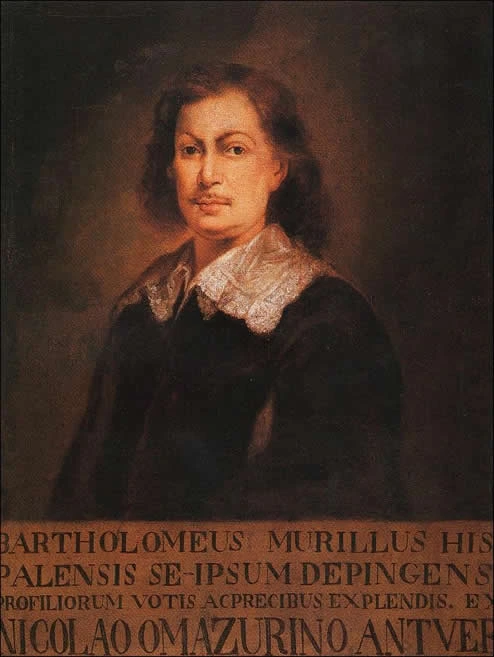
Bartolomé Murillo
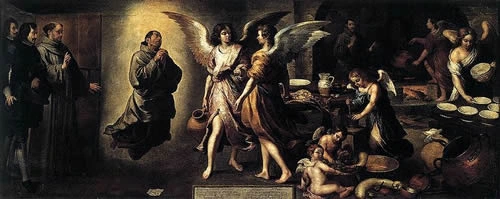
The Angels' Kitchen, the Louvre Museum, Paris
In 1645, Murillo marries Beatriz Cabrera, with whom he had ten children. In this year, Murillo receives the first important commission of his career, a series of works for the cloisters of the San Francisco el Grande convent in Seville. He would work on it until 1648. The series portrays stories of saints of the Franciscan order and includes The Angels' Kitchen, the most celebrated work of the group for its attention to detail and realism. Naturalism and chiaroscuro are prevalent throughout this work.
Beginning in 1649, and due to the impact of the plague, Murillo receives no new commissions of magnitude. Consequently, he works on painting some of his most popular works, looking to express sacred themes naturally and with compassion. He paints several versions of the Virgin and Child. He also produces secular paintings during this time.

St. Catherine of Alexandria
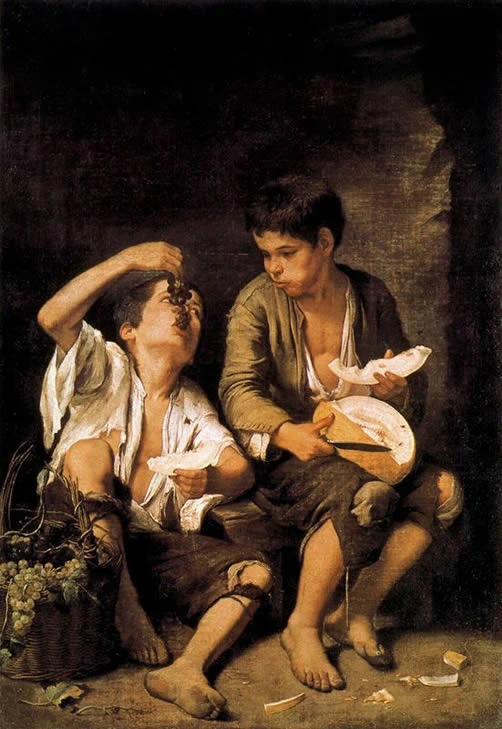
Boys Eating Grapes and Melon, Neue Pinakothek, Munich
In the 17th century, Seville was an important center for religious culture. Therefore, the demand for religious works came not only from the church for temples and convents, but also from private clients. This explains Murillo's abundant production, surpassing even Zurbarán in fame. It also explains the assortment of copies leaving the studio, as occurred with the half-length portrait of St. Catherine of Alexandria.
In 1655, Francisco de Herrera the Younger, a native of Madrid, arrives in Seville after having lived in Italy for several years. This painter's influence would immediately inform Murillo's work with backlit figures.
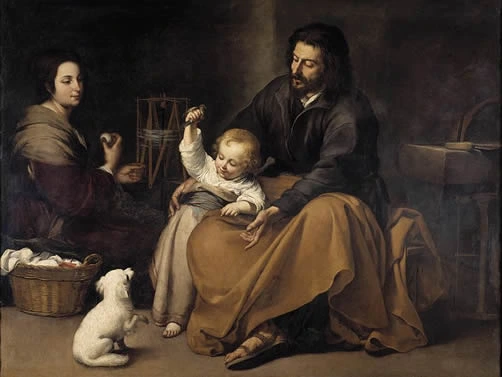
The Holy Family with a Little Bird, 1649-1650, Prado Museum, Madrid
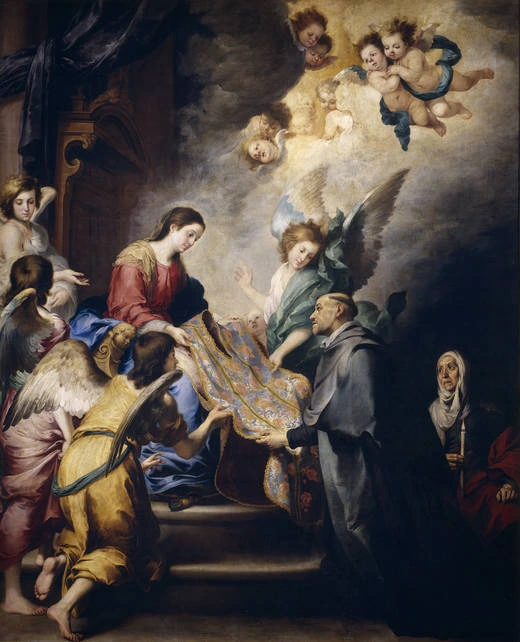
The Apparition of the Virgin to St. Ildefonso, ca. 1665, Prado Museum, Madrid
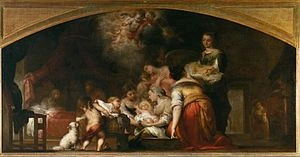
The Birth of the Virgin, 1660
In 1658, Murillo travels to Madrid for several months. The reason for his move is not known for certain, but it is believed that he may have had contact with Velázquez, Zurbarán, and Cano - all Sevillians residing in Madrid - as well as with other painters from Madrid. Returning to Seville, Murillo founds the Seville Academy for painting. He would hold the presidency until 1663.
In 1662, he begins a series of large commissioned works.
The first is a series of paintings to remodel the temple for the church of Santa María la Blanca, which had been a synagogue. It included four paintings to decorate the walls. Two of these paintings, in the shape of semicircles, present stories of the establishment of the Basilica of Santa Maria Maggiore of Rome, and the other two are the Immaculate Conception and The Triumph of the Eucharist. The four paintings left Spain during the War of Independence and only the first two returned, being added to the Prado Museum. Of the two remaining pieces, one remains in the Louvre Museum and the other is in a private collection.
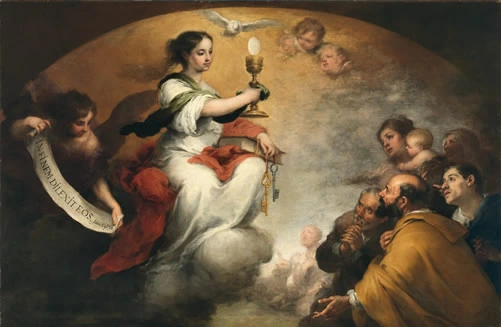
The Triumph of the Eucharist, 1662-65
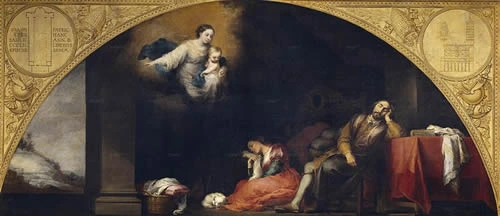
Juan the Patrician's Dream, 1662-1665

Main altarpiece of the Capuchin convent, Museum of Fine Arts of Seville
Between 1665 and 1669, Murillo completes sixteen paintings for the convent of the Capuchin Church of Seville.
Later, the Brotherhood of the Holy Charity, after Brother Miguel Mañara joined, places Murillo and Valdés Leal in charge of the pictorial work to complete a decorative project for the church. The themes are related to works of mercy.
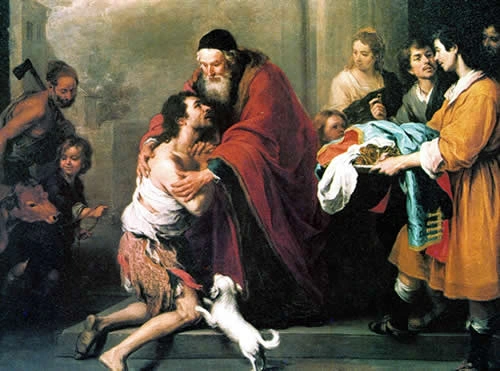
Return of the Prodigal Son, 1666-1670, National Gallery of Art, Washington
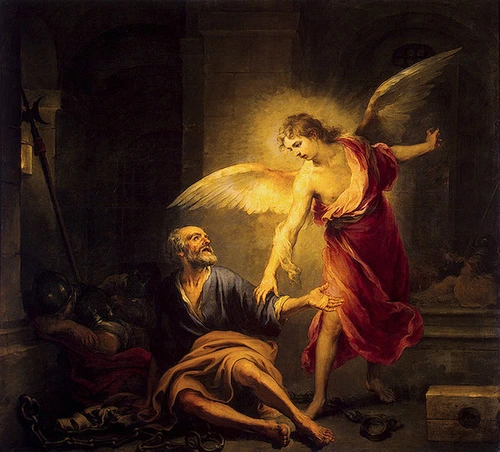
Liberation of St. Peter, Hermitage Museum, St. Petersburg
Due to the famine of 1678 from poor harvests, the church's resources are devoted to charity, leaving the decoration of temples for another time and leaving Murillo without large commissions. However, his friends solicit devotional works and genre paintings for their private chapels.
In 1681, at the end of his life, Murillo begins a series in the Capuchin church of Cadiz that he will not finish. Bartolomé Esteban Murillo dies on April 3, 1682, as a result of an injury suffered by falling off scaffolding while painting The Mystic Marriage of St. Catherine for the main altarpiece of the Capuchins of Cadiz.
Murillo's influence on Spanish painting extended until the 19th century, principally in Seville. Murillo is currently considered one of the greatest masters in art history, and his highly regarded paintings are distributed in all the great museums of the world.
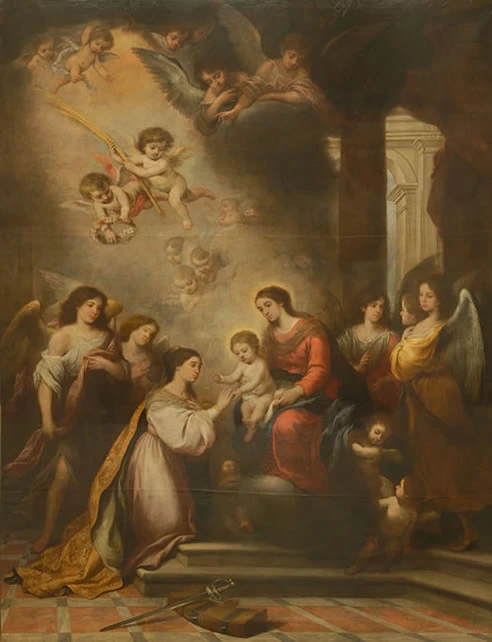
The Mystic Marriage of St. Catherine, 1682, Cadiz Museum